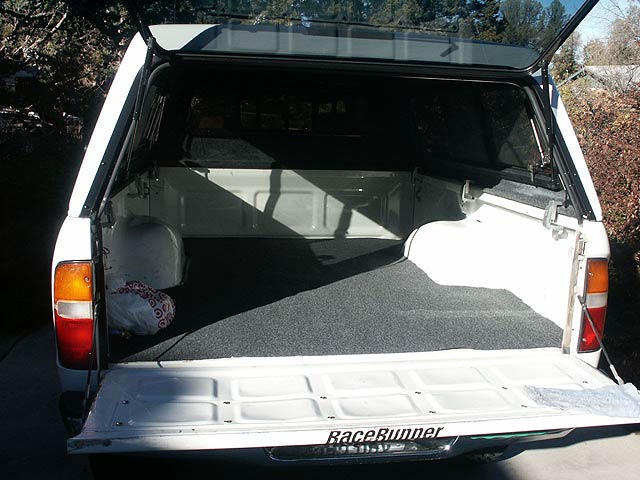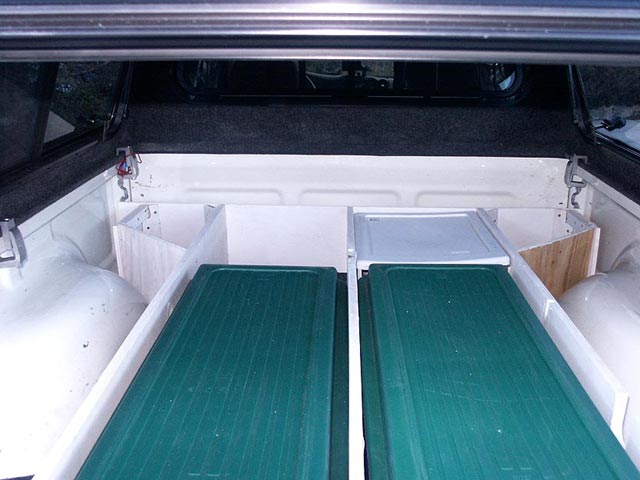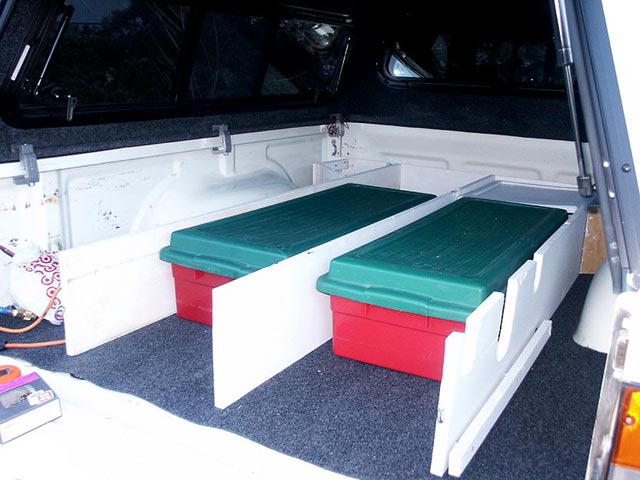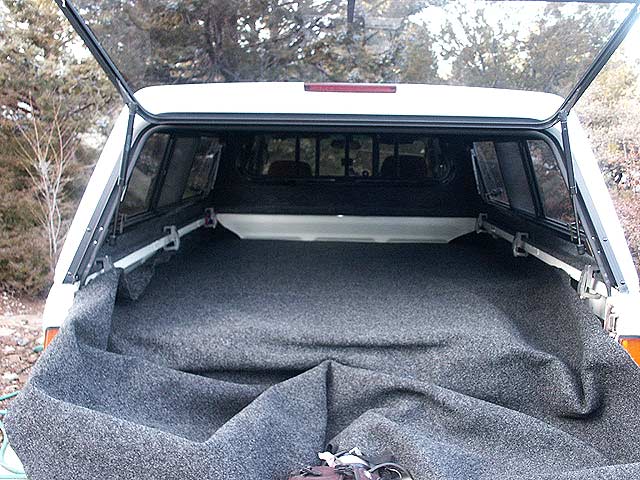

Here is the new carpet lining installed on the floor. I found this carpet at Home Depot and the color match was pretty good. It is an all-weather type of carpet, with a rubberized backing.

The "rebuilt" cargo deck being installed. I used the same design as my original setup that I built in 1999, just replacing any of the pieces that had any water damage or too many old deck screw holes in them. The plastic bins that fit inside the cargo bays are nice and snug. I built the frame for the below-deck compartments out of standard pieces of 1 x 10 wood. All of it is screwed together with zinc-plated deck screws, which provide strength and the option of removal.



The deck carpet being installed. Before I found the carpet at Home Depot, I had purchased this from the camper shell dealer and it is a perfect match to the A.R.E. charcoal colored lining. It does not have any backing though. I used a professional-grade upholstery adhesive to tack it to the deck.

Here is the finished cargo deck complete with carpet lining.
